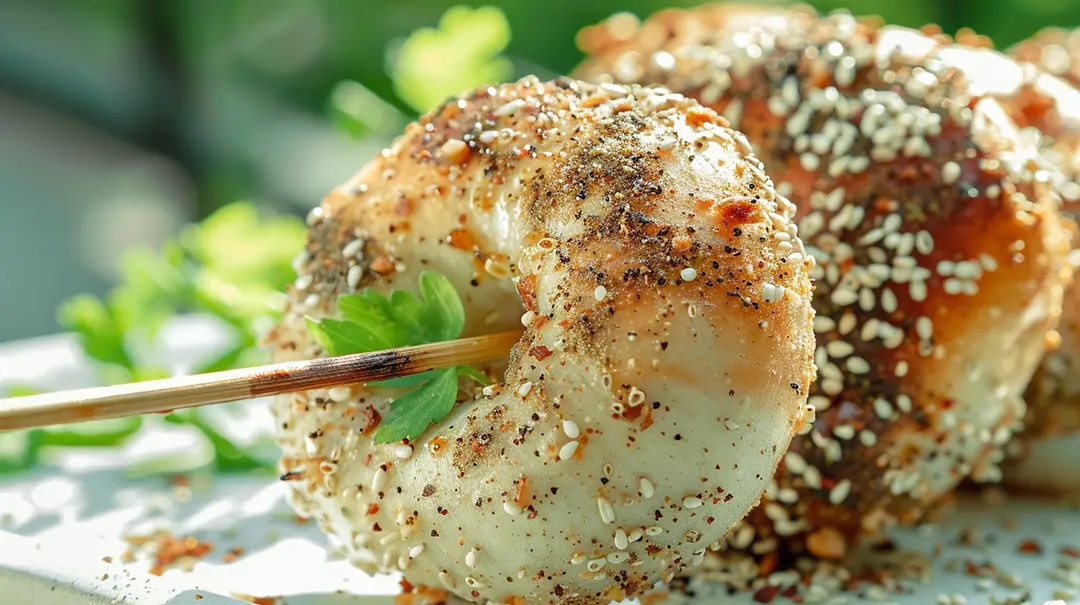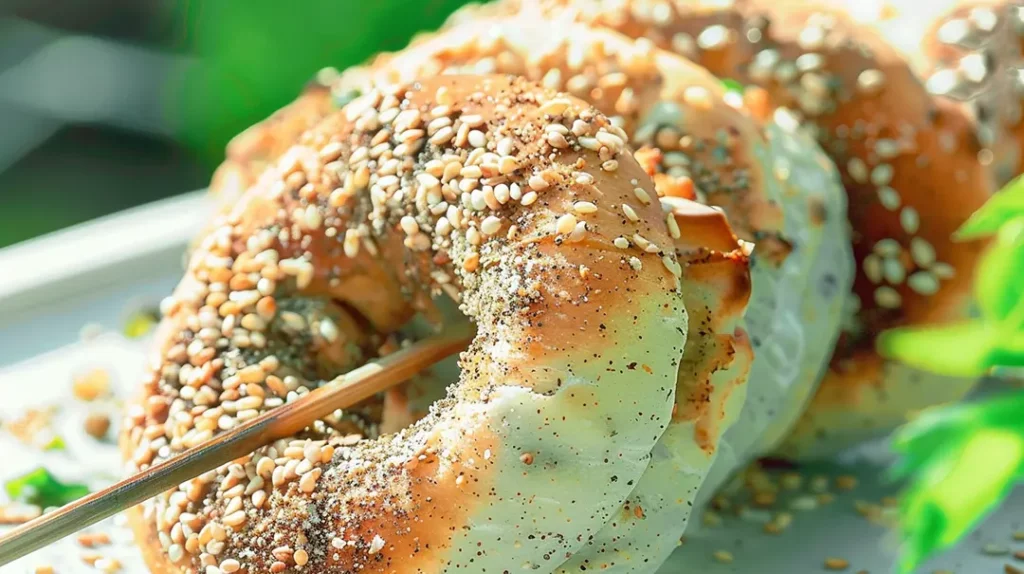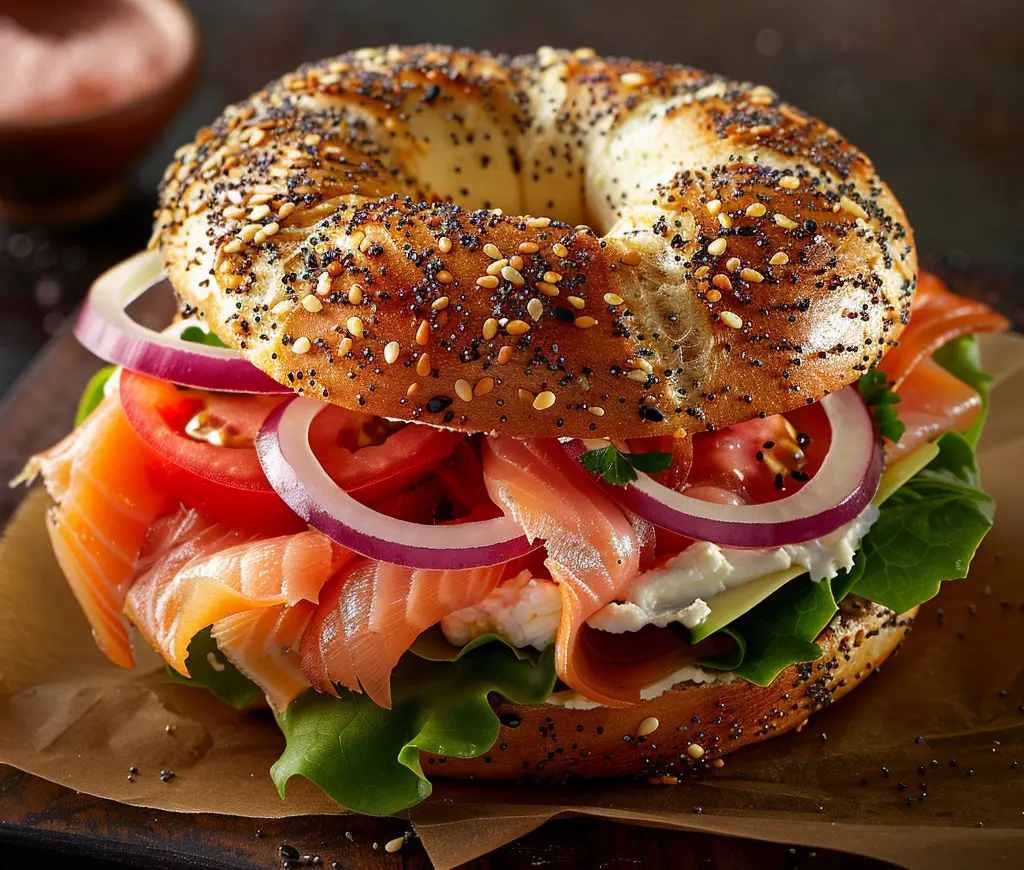
Discover the fascinating histories of ka'ak and bagels, showcasing the rich tapestry of culinary exchange. While ka'ak offers a fluffy, sesame seed-adorned bread with a Middle Eastern twist, the bagel boasts a dense, chewy texture rooted in Eastern European Jewish traditions. The cultural significance and regional variations of these beloved breads highlight the diverse influences in Mediterranean food culture.
Bread is a universal staple, but its forms and flavours vary widely across cultures. Among the fascinating examples of this diversity are ka’ak, a traditional Arabic bread, and the beloved bagel. While they may look similar at first, their histories and cultural significance reveal a rich tapestry of culinary exchange, particularly during the turbulent period of the Austrian-Ottoman struggles.
Ka’ak, a ring-shaped bread cherished throughout the Middle East, boasts a rich history spanning centuries. While ancient Arabic cookbooks from as early as the 13th century mention ka’ak and even describe a method of boiling the dough before baking, this practice is not commonly followed in modern preparations. Today, ka’ak is typically made without the boiling step, resulting in a bread that is fluffy on the inside and crunchy on the outside.
Traditionally adorned with sesame seeds, ka’ak offers a subtle sweetness and a texture that is generally lighter and softer compared to bagels. Its versatility allows for both savoury and sweet variations, making it a popular street food and household staple across the region. The bread’s distinctive shape not only adds to its visual appeal but also serves a practical purpose, allowing it to be easily hung on wooden rods or strung together for transport and sale.
Modern ka’ak recipes often incorporate ingredients like olive oil and sometimes powdered milk, contributing to its tender crumb and rich flavour. While the ancient boiling method may have influenced the development of other ring-shaped breads like bagels, contemporary ka’ak has evolved into its own unique culinary tradition, beloved for its simplicity and delicious taste
Ka’ak is more than just food; it is a cultural symbol, often found as street food in busy markets. Its variations, such as the Jerusalem ka’ak, show the diversity within Arabic culinary traditions, showcasing regional ingredients and preparation methods.

The bagel has its origins in Eastern European Jewish communities. Known for its dense and chewy texture, the bagel is also boiled before baking, which gives it its distinctive crust and interior. Bagels come in many flavours and toppings, reflecting the culinary creativity of the communities that embraced them.
The bagel’s rise to popularity in North America shows the cultural exchange that happens when different communities meet. As Jewish immigrants settled in the United States, they brought their culinary traditions with them, making the bagel a beloved staple.

The connection between ka’ak and bagels may have been influenced by the historical context of the Austrian-Ottoman struggles. From the 16th to the 18th centuries, the Ottoman Empire and the Habsburg Monarchy fought a series of military conflicts across Central and Eastern Europe. These wars shaped political boundaries and facilitated cultural and culinary exchanges.
Military Campaigns
As armies moved through regions, they shared their food traditions, including techniques and recipes. Interaction between soldiers and local populations likely led to the adaptation of various culinary practices.
Trade Routes
The conflicts affected trade routes, allowing for the exchange of goods, including food. Spices, grains, and recipes travelled along these routes, influencing local cuisines and bread-making traditions.
Diplomatic Marriages
Intermarriage and diplomatic alliances often resulted in cultural exchanges. Sharing culinary traditions would have been a natural part of these interactions, blending the food cultures of the two empires.

The relationship between ka’ak and bagels shows the beauty of culinary fusion. While each holds a unique place in its respective culture, the historical context of the Austrian-Ottoman struggles highlights how food can bridge different traditions. Understanding these connections enriches our appreciation for the foods we enjoy today, reminding us that every bite carries a story of cultural exchange and adaptation.
As we savour a bagel or a piece of ka’ak, we celebrate not only the flavours but also the shared history that connects us.

At Med.kitchen, our passion lies in crafting exceptional culinary experiences through our online platform. We specialise in sharing a wealth of knowledge via articles, recipes, courses, and online mentoring, aiming to inspire both novice and seasoned chefs alike. Our focus has shifted from private dining to being an online source of gastronomic inspiration, allowing you to explore and refine your culinary skills from the comfort of your home..